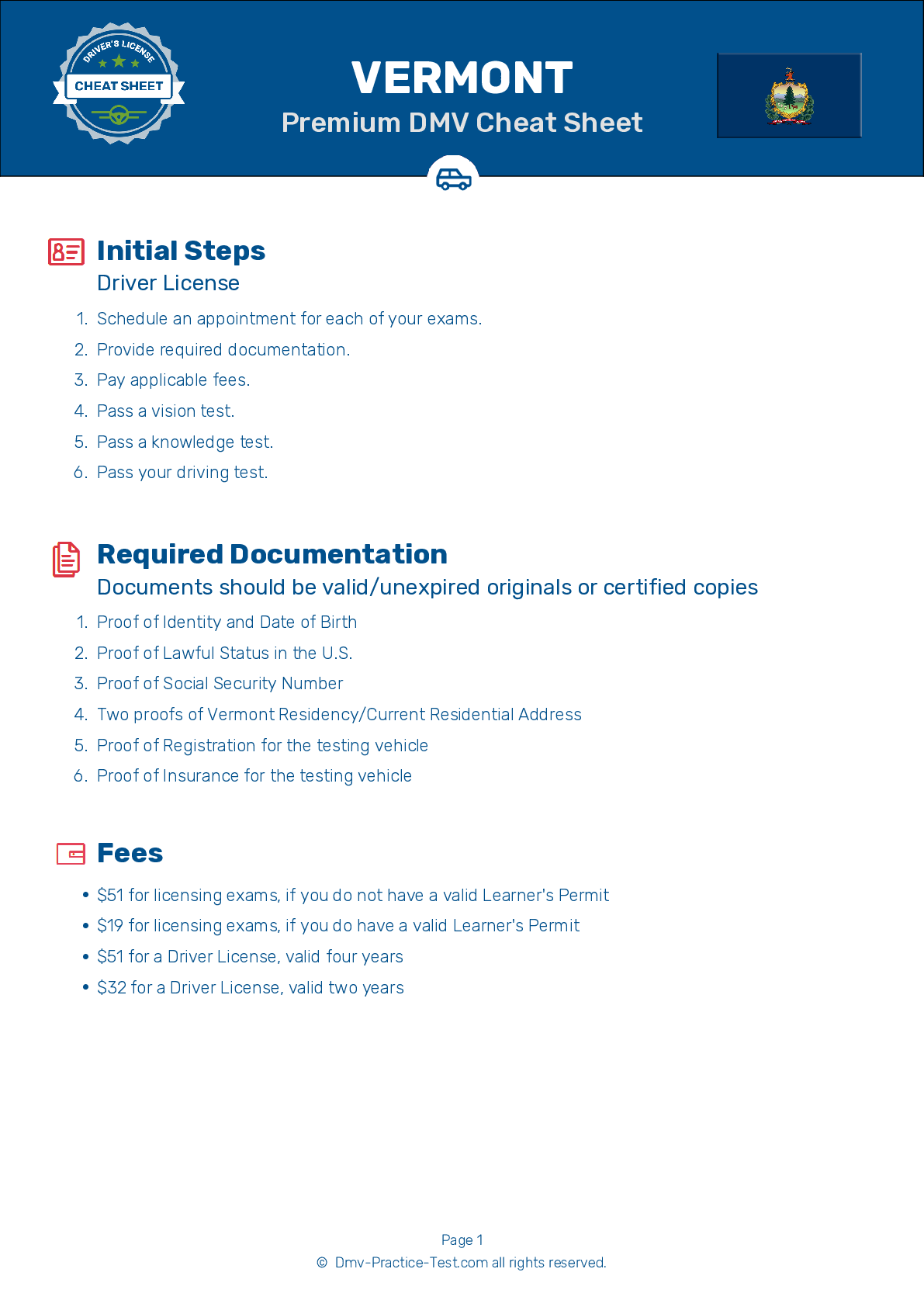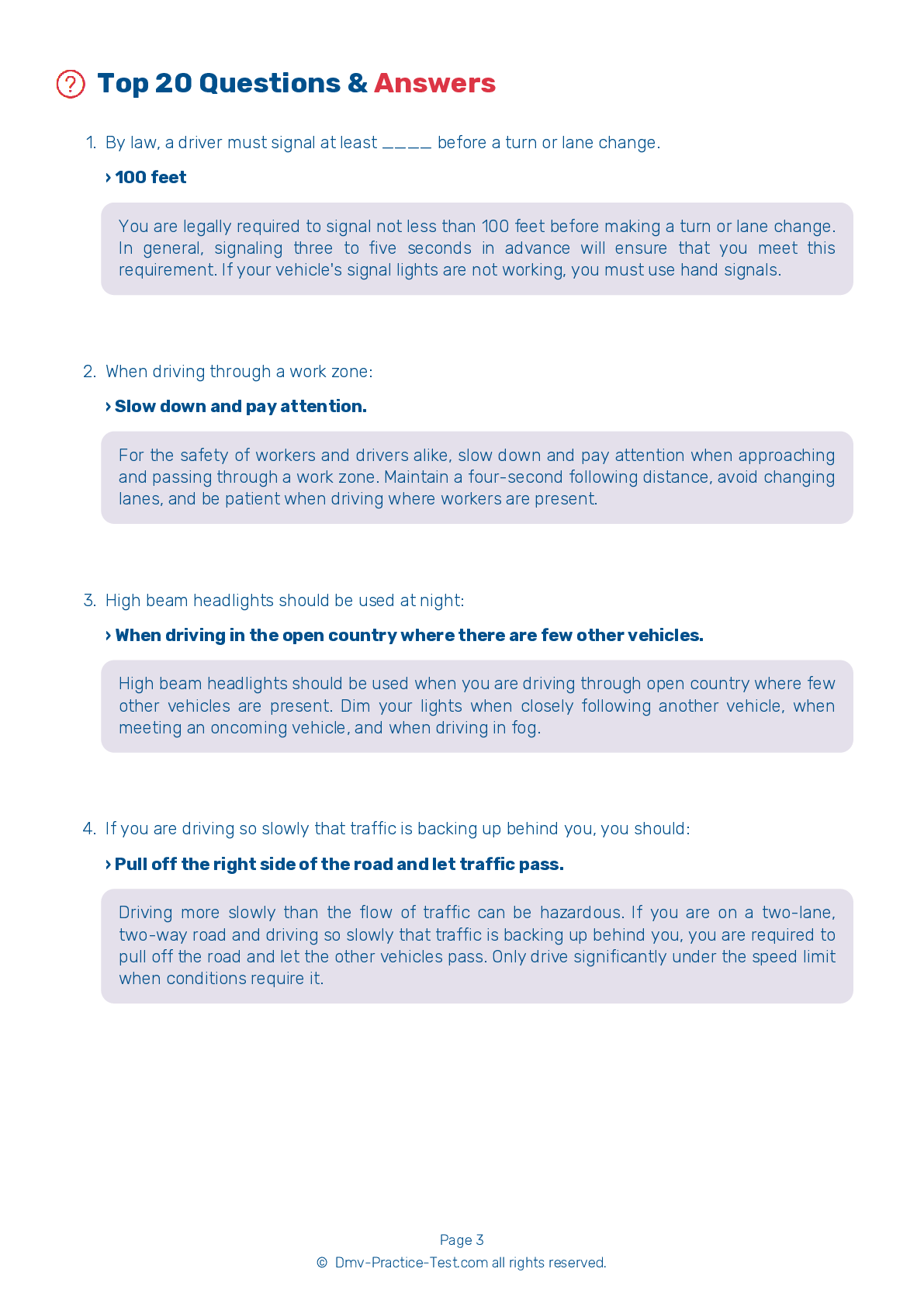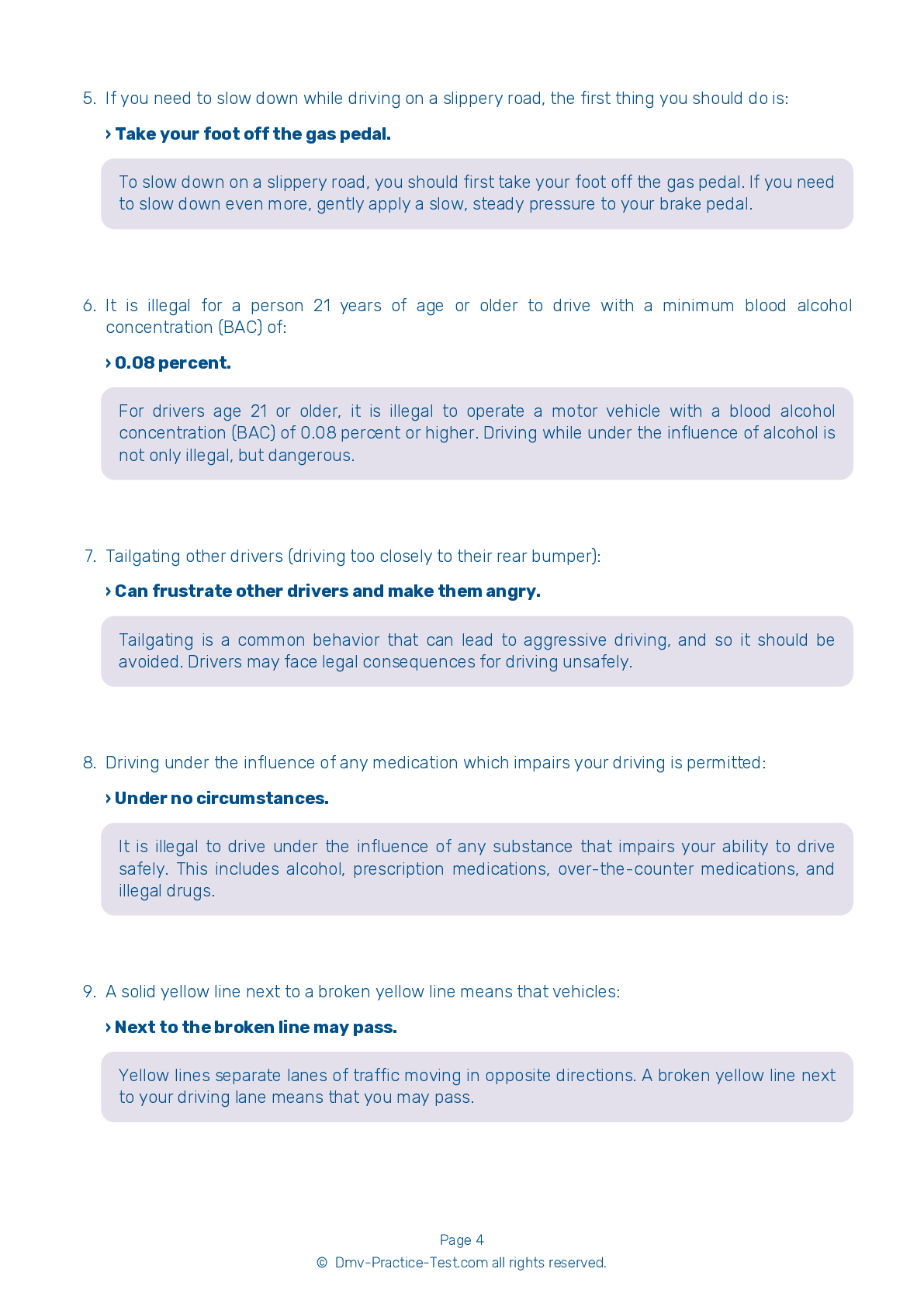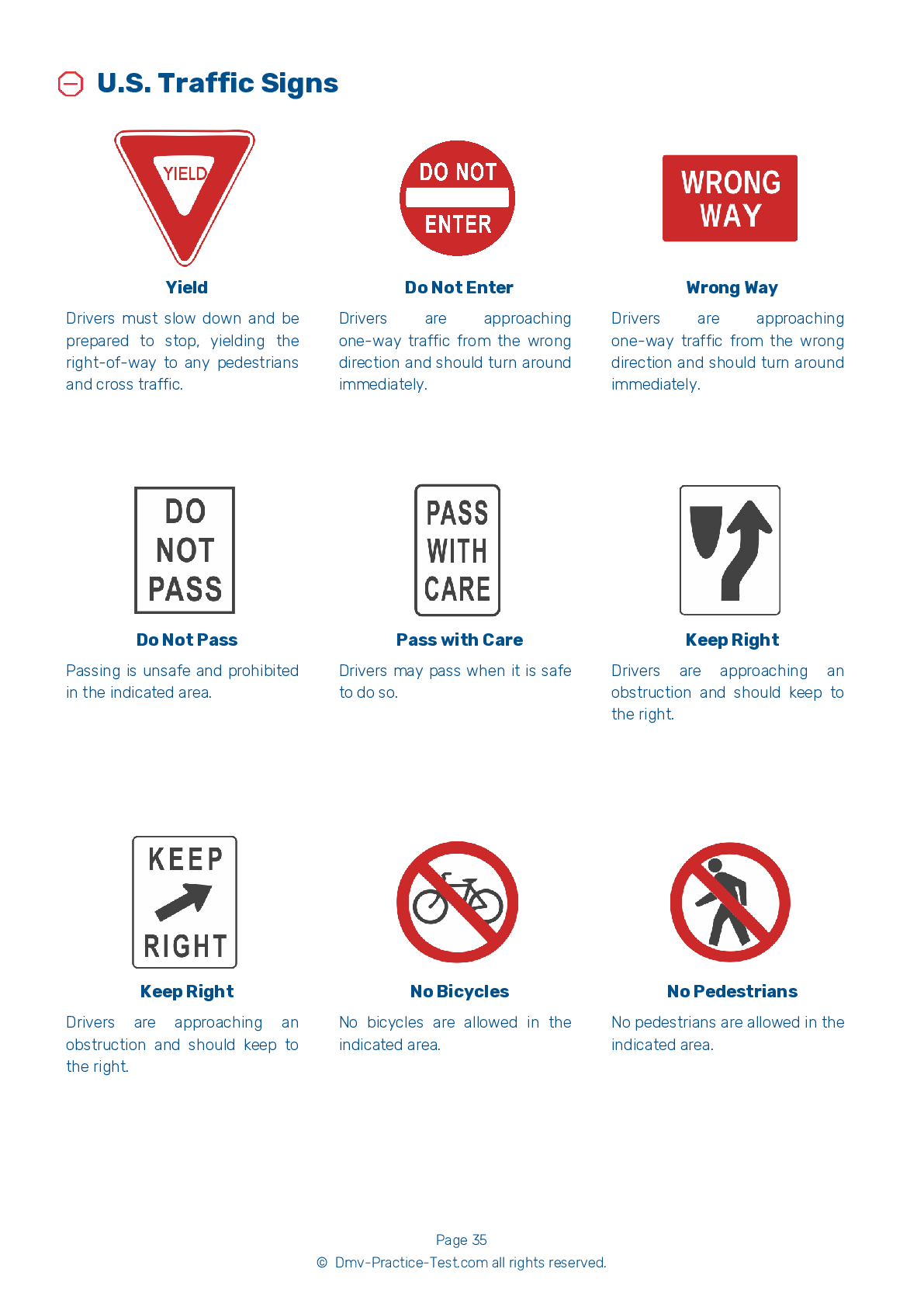FREE Vermont DMV Practice Test #9 Page 3 of 3
The Vermont DMV practise examinations have been updated for January 2025. It includes questions based on the Vermont Driver Handbook's most significant traffic signals and legislation for 2025. Use actual questions that are very similar (often identical!) to the DMV driving permit test and driver's licence exam to study for the DMV driving permit test and driver's licence exam.
On the practise exam, each question gets a tip and explanation to help you remember the concepts. The written component of the official Vermont DMV test will include questions about traffic rules, traffic signs, and driving statutes, as well as knowledge from the Driver Handbook.
To obtain a passing grade, you must correctly answer 16 of the 20 questions. Use the practise exam provided by the Vermont Department of Motor Vehicles to help you prepare for your instruction permit or driver's licence.
The DMV exam is available in several languages.
Using any kind of testing assistance will result in an automatic fail, and the DMV may take additional action against your driver's licence, so stay away from it.
14 . As a pedestrian, you should:
Pedestrians should not enter a street or crosswalk when vehicles are approaching. Though pedestrians have the right-of-way in crosswalks, a vehicle approaching from a close distance may not have the time to stop before entering the crosswalk.
15 . This road sign means:
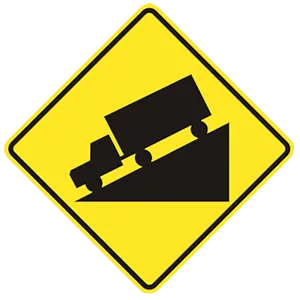
This sign indicates that a steep downhill grade is ahead.
16 . Consuming which of the following substances may impair your ability to drive safely and may result in an arrest for driving under the influence of intoxicants (DUII)?
A wide variety of intoxicants can impair your ability to drive. These include all types of alcoholic beverages, illegal drugs, inhalants, and many legal medications (both prescription and over-the-counter).
17 . Increase your following distance when:
You should increase your following distance when you are behind a large vehicle that blocks your vision, when driving in bad weather or heavy traffic, when exiting an expressway, when behind a motorcycle or bicycle, and if someone is tailgating you.
18 . Which of the following about winter driving is not true?
You should not use cruise control on snow, in rain, in fog, or under similar hazardous conditions. Winter is the most difficult driving season and requires extra caution from drivers. It is important to consistently check your antifreeze and windshield washer fluid levels. Using snow tires can increase a vehicle's traction on the surface of slippery roads.
19 . Regulatory signs:
Regulatory signs are often rectangular and white with black markings and are used to indicate what things a driver must or must not do in a designated area. They may display speed limits, prohibit passing or turning, or clarify any other driving regulation.
20 . When two vehicles arrive to an intersection at the same time, which one has the right-of-way when no signs or signals indicate rules?
At an intersection of two similar roads without a traffic control device, a driver must yield to a vehicle approaching from the right.
2025 Vermont | Frequently Asked Questions
1. Not checking mirrors and blind spots before changing lanes or turning.
2. Speeding or driving too slowly for the conditions or posted speed limit.
3. Not coming to a complete stop at stop signs or red lights.
4. Incorrect signalling or not signalling at all.
5. Poor parking, especially parallel parking.
Remember, practice makes perfect, so take time to hone your skills.
